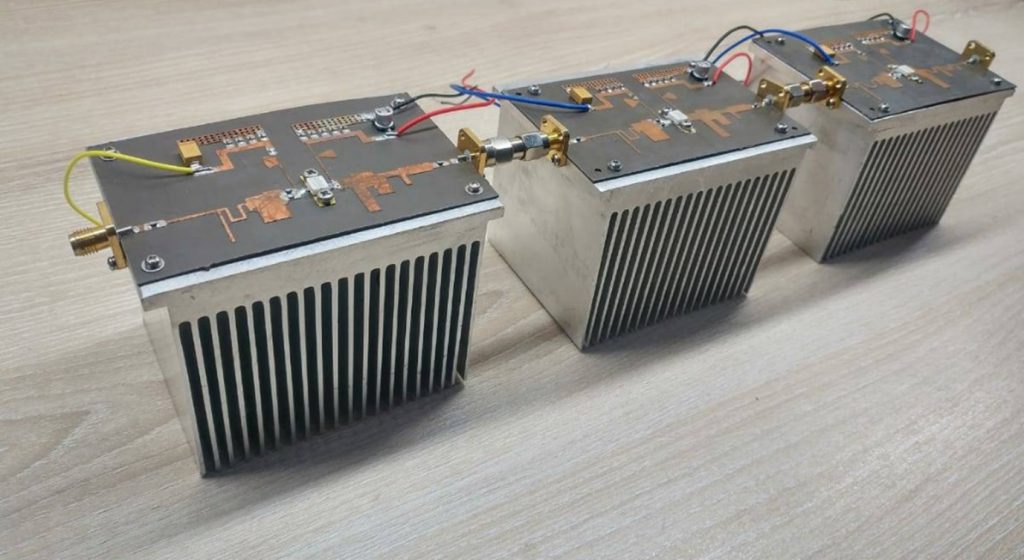Dr. Waqar Ahmad Malik, the Head of RF & Microwave; Avionics Engineering Department, College of Aeronautical Engineering, NUST has made a groundbreaking contribution to the field of radio frequency and microwave engineering with his latest research project. The focus of this innovation is a highly efficient 25 Watts broadband Power Amplifier (PA), adeptly designed for broad spectrum applications, operating within the critical frequency range of 2.2 GHz to 2.7 GHz. This technological advancement is a testament to the prowess and ingenuity in modern engineering research.

Engineering Excellence and Advanced Design
The PA prototype exhibits an extraordinary capability of amplifying a 0 dBm (1 mW) signal to an impressive 44 dBm (25 W) power level. This is achieved through a sophisticated three-stage amplification process, with the first two stages contributing a gain of 17 dB each, followed by a final power stage offering an additional gain of 10-12 dB. The choice of Gallium Nitride High-Electron-Mobility-Transistor (GaN HEMT) technology underscores the cutting-edge nature of this design.
This research has been carried out at the Department of Avionics Engineering, College of Aeronautical Engineering (CAE), NUST.
Precision and Efficiency in Amplification
Dr. Malik’s team has demonstrated remarkable expertise in employing advanced broadband matching networks, utilizing Richard’s and Karuda’s identity techniques. The substrate used, Rogers 5880, is carefully selected for its optimal thickness of 0.78 mm and a dielectric constant of 2.2, ensuring precision and efficiency in the design. The alignment between simulated and measured results of the prototype underlines the accuracy and reliability of this innovative technology.

Utilization for Broad Spectrum Applications
The PA’s overall gain of 44 dB and its Power Added Efficiency reaching up to 70% are significant achievements, especially with its consistent performance exceeding 60% across the entire 2.2 GHz – 2.7 GHz band. Such efficiency makes the amplifier highly suitable for a variety of applications in the fields of RF and microwave engineering, including but not limited to communication, signal processing, and Electronic Warfare.

Research and Development Contribution
This project can be regarded as a groundbreaking for promising research and development efforts in the field of RF & Microwave engineering. The precise engineering and the efficient performance of the PA prototype reflects the high standards of research methodology and experimental validation.

The Future
Research in developing this broadband Power Amplifier represents a significant stride in the field of RF & Microwave engineering. The applications of this research are far-reaching, offering potential enhancements and innovations in various technological applications. The successful development and validation of this PA prototype not only showcases the expertise and ingenuity in modern RF & Microwave engineering but also paves the way for future advancements and applications in this dynamic field of research.
The author is Assistant Professor and Group Head RF & Microwave at Avionics Engineering Department, College of Aeronautical Engineering, NUST, and Principle Investigator (PI) of an industrial project to develop GaN HEMT based wideband Power Amplifier. He can be reached at wmalik@cae.nust.edu.pk.
Research Profile: https://bit.ly/3VjKbrq

![]()






